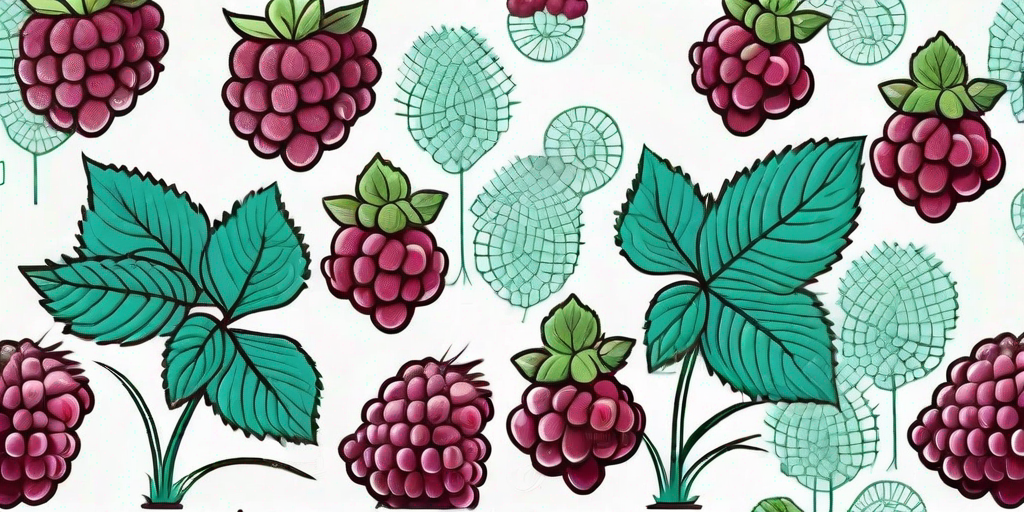
Ah, the humble raspberry. A tiny, tantalizing treat that packs a punch in flavor. But have you ever wondered about the journey of this ruby red delight? From a minuscule seed to a full-grown bush brimming with juicy berries, the life cycle of a raspberry bush is a tale worth telling. So, sit back, grab a bowl of raspberries (if you have any handy), and let's embark on this berry exciting journey.
The Genesis: Raspberry Seeds
Our journey begins with a tiny, often overlooked, raspberry seed. These seeds are the unsung heroes of the raspberry world. They're the ones who kick-start the whole process, after all. Each raspberry fruit contains around 100 to 120 seeds. Yes, you heard it right! Those tiny seeds you casually spit out or swallow hold the potential to become a full-fledged raspberry bush.
But, of course, not all seeds get to fulfill their destiny. Only the ones that find themselves in the right conditions - a perfect blend of sunlight, moisture, and soil - get to embark on this extraordinary journey. The rest, well, they just become a part of the great circle of life (cue 'Lion King' music).
From Seed to Sprout: The Germination Process
Once a lucky seed finds itself in the right conditions, it's time for the magic to happen. This stage, known as germination, is when the seed starts to sprout. It's like the seed's version of puberty - a lot of growth happens in a short span of time. Within a few weeks, the seed transforms into a tiny plant, complete with roots, stem, and leaves.
During this stage, the seed absorbs water and swells up. The outer shell cracks open, and a tiny root emerges. This root, called the radicle, burrows into the soil, anchoring the seed in place. Meanwhile, the stem (or shoot) grows upwards, reaching for the sunlight. The first leaves, called cotyledons, also make their appearance. These leaves are the plant's first food factory, converting sunlight into food through photosynthesis.
The Growth Spurt: Becoming a Raspberry Bush
After the germination stage, the plant enters a phase of rapid growth. This is when it truly starts to look like a raspberry bush. The stem thickens, more leaves appear, and branches start to form. This stage is like the plant's teenage years - it's all about growth and exploration.
But it's not all smooth sailing. The plant has to contend with various challenges, like pests, diseases, and harsh weather conditions. But with the right care, it can overcome these hurdles and continue its growth journey.
The First Blooms
After a few months of growth, the raspberry bush is ready to produce its first flowers. These flowers are small, white, and have five petals. They might not look like much, but they're the precursors to the delicious raspberries we all love.
The flowers are pollinated by bees, butterflies, and other insects. Once pollinated, the flowers start to develop into fruits. And this is when things start to get really exciting.
The Arrival of Raspberries
After the flowers are pollinated, they start to transform into tiny green fruits. Over time, these fruits grow and change color, turning from green to red. This color change is a sign that the raspberries are ripe and ready to be picked.
Picking raspberries is a delicate task, as they're quite fragile. But the reward - a handful of fresh, juicy raspberries - is well worth the effort. And with that, our journey from seed to raspberry is complete.
Frequently Asked Questions
How long does it take for a raspberry bush to produce fruit?
From seed to fruit, it can take a raspberry bush about 18 months to produce its first batch of raspberries. However, if you're planting a young raspberry plant (also known as a raspberry cane), you could see fruit in the first year.
How often should I water my raspberry bush?
Raspberry bushes like moist, but not waterlogged, soil. As a general rule, water your raspberry bush once a week, but adjust based on weather conditions. In hot, dry weather, you might need to water more often.
Do raspberry bushes need a lot of sun?
Yes, raspberry bushes love the sun! They need at least six hours of sunlight each day to grow and produce fruit. So make sure to plant your raspberry bush in a sunny spot in your garden.
Conclusion
And there you have it - the epic journey of a raspberry bush, from a tiny seed to a juicy delight. It's a journey filled with growth, transformation, and a few challenges along the way. But the end result - a bush brimming with delicious raspberries - makes it all worth it.
So the next time you pop a raspberry into your mouth, take a moment to appreciate the journey it's been on. And who knows, maybe you'll be inspired to start your own raspberry bush journey. Happy gardening!











